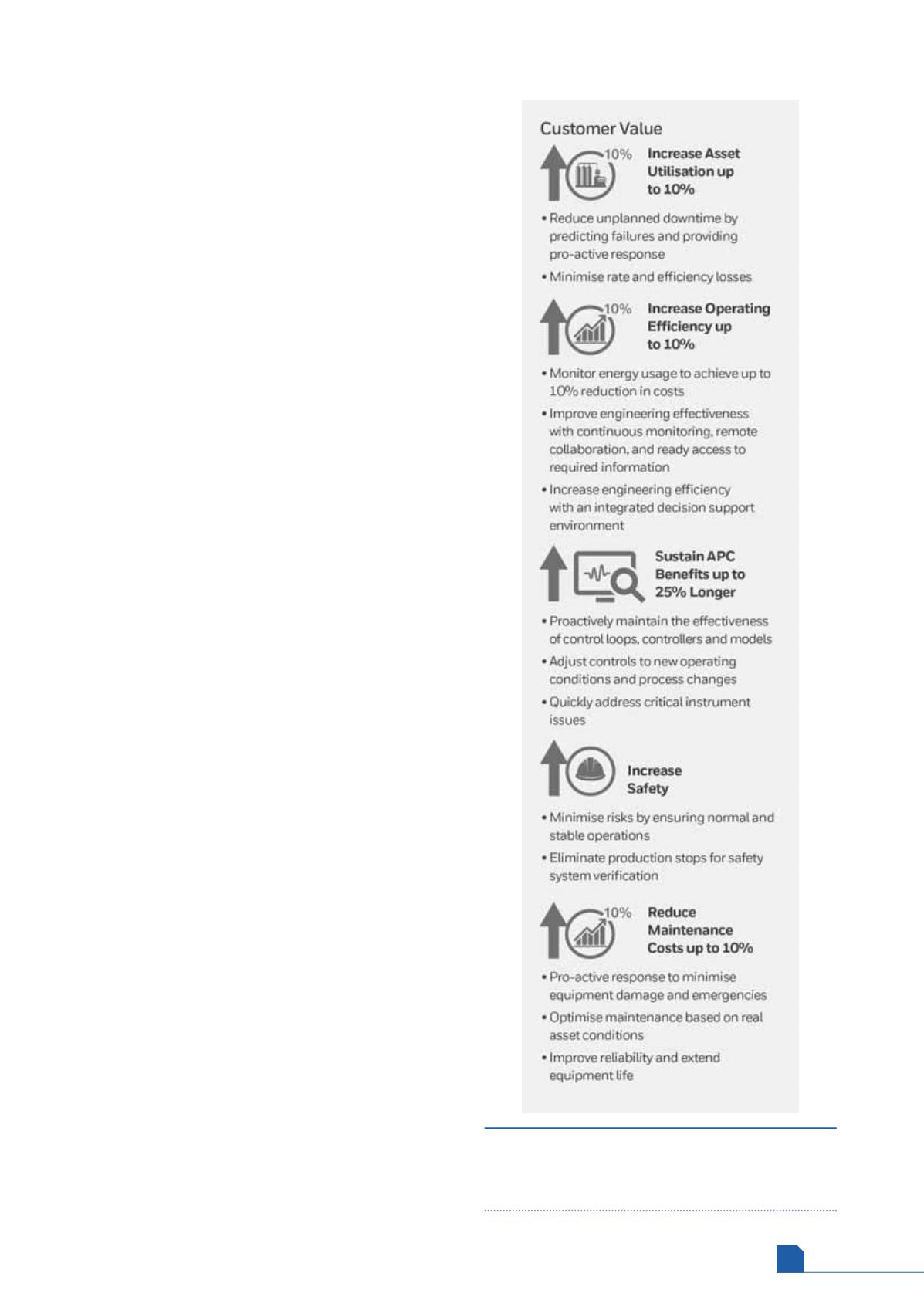
March
2017
HYDROCARBON
ENGINEERING
39
pumps, compressors, exchangers, valves, and turbines.
Combined with an interface to process design simulation
software, this solution helps users rapidly deploy
equipment or process monitoring on any plant asset –
eliminating the need for complex model development.
It is important to remember that the IIoT is not just
about capturing sensor data. Information needs to be put
into the asset context structure; merely operating on
tag-based data will not ensure a repeatable and scalable
solution. Processes are instrumented for control rather than
reliability or optimisation. As a result, much of the ‘derived
data’ important for prediction and decision-making is
locked in spreadsheets and other standalone tools. It is
essential to continuously calculate this data and bring it
into the IIoT environment, where continuous runtime
analytics can examine historical performance for use in
machine learning algorithms.
Furthermore, IIoT solutions should not solely rely on a
statistical model to detect deviations from the norm.
Having a fundamental, physics-based model creates a
digital twin, with a virtual representation of the process or
asset located in the cloud. This allows users to model and
compare expected process performance against actual
results, and then apply these deviations as early indicators
of health degradation.
Digital twins exist at the intersection of physical
engineering and data science, and their value translates
directly to measurable business outcomes: reduced asset
downtime, lower maintenance costs, improved plant and
factory efficiency, reduced cycle times, and increased
productivity.
Benefits to industrial organisations
Rapid adoption of the IIoT has created economies of scale
for smart sensors, connectivity, analytics, and robust
software platforms. This change is driving the adoption of
enterprise-level performance management, process
monitoring, predictive maintenance programmes, and
business transformation with the goal of eliminating
unplanned downtime and reducing operating costs while
maintaining product quality and compliance.
A real world approach to the IIoT enables the
integration of current systems and the addition of new data
sources and analytics to support complementary,
continuous improvement processes, focused on
performance monitoring and decision support. The specific
benefits of this approach include the following:
Increase process reliability and asset utilisation up to
10%: plants can reduce unplanned downtime by
defining and operating within operating and integrity
envelopes, predicting failures and providing proactive
responses, as well as minimising rate and efficiency
losses.
Increase operating efficiency up to 10%: industrial
organisations can manage performance, including
yields, energy and raw material usage, to achieve up to
10% reduction in costs. This results from enhanced
engineering and production effectiveness with
continuous monitoring, remote collaboration and ready
access to required information, as well as improved
decision support.
Figure 3.
There are measurable benefits from the
integration of current systems with new data sources
and analytics that complement processes focused on
performance monitoring and decision support.








